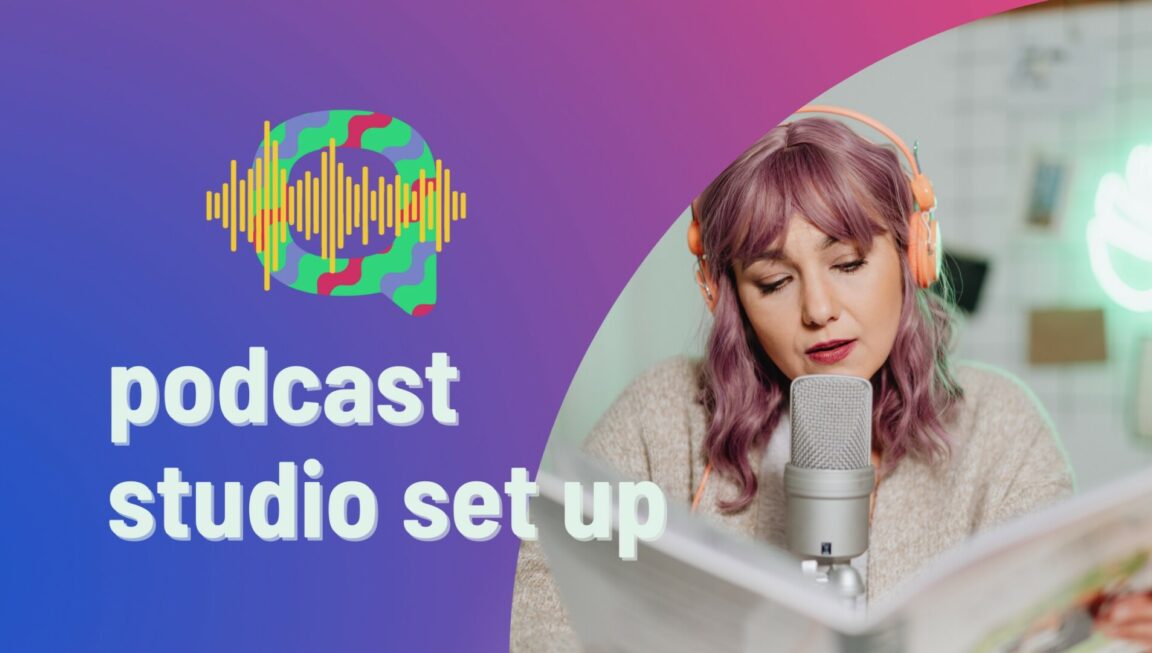Looking to set up a podcasting studio? This guide covers every step: picking the right room, soundproofing it, and selecting essential gear. From microphones to editing software, you’ll learn how to create a professional podcasting space.
Key Takeaways
Choose a quiet room with soft furnishings for optimal podcast sound quality and consider basic soundproofing techniques.
Invest in essential podcast equipment, focusing on microphones, headphones, and audio interfaces to enhance recording clarity.
Effective promotion through social media, video clips, and guest collaborations is crucial for growing your podcast audience.
Choosing the Perfect Podcasting Space
Selecting the ideal location is critical when setting up a podcast recording studio, as it lays the groundwork for superior audio quality. Transform your home podcast studio into a personalized and professional-grade space by choosing an area with negligible external noise that boasts soft materials to amplify sound quality. Evade typical pitfalls such as selecting spaces with elevated ceilings and uncovered surfaces that could introduce echoes and detract from your listeners’ experience.
For top-notch sound quality in a podcast recording, prioritize finding a tranquil room adorned with plush furniture which will absorb sounds and minimize reverberation. We’ll delve into uncovering the right space for your needs along with fundamental principles of acoustically treating it to ensure you establish a high-quality recording environment suitable for producing podcasts.
Finding a Quiet Room
Selecting the most silent area within your residence or workplace is crucial for cutting down on external noise when setting up a podcasting space. Opt for a room that’s away from the street and doesn’t share walls with neighbors to limit interruptions from outside sources. Stay clear of areas with reflective surfaces such as kitchens or rooms with tiled flooring, as they tend to amplify echoes and unwanted sounds. Instead, target smaller spaces isolated from high-traffic areas—those outfitted with carpet, draperies, and upholstered furnishings are ideal for their sound-absorbing qualities. A closet might also serve as an unexpectedly apt recording space due to its inherent properties that help diminish auditory disturbances.
In achieving crisp audio quality within your recording environment, materials that deaden sound are essential. Surfaces like carpets, rugs, and soft furniture play an instrumental role in soaking up acoustic waves. Conversely, elements such as mirrors, windowspanes, and tile work should be sidestepped because they reflect sound waves which can muddle recordings. Simple interventions like laying down a rug or suspending curtains could greatly contribute toward mitigating reverberation effects thereby refining the acoustics necessary for creating an appropriate podcasting space.
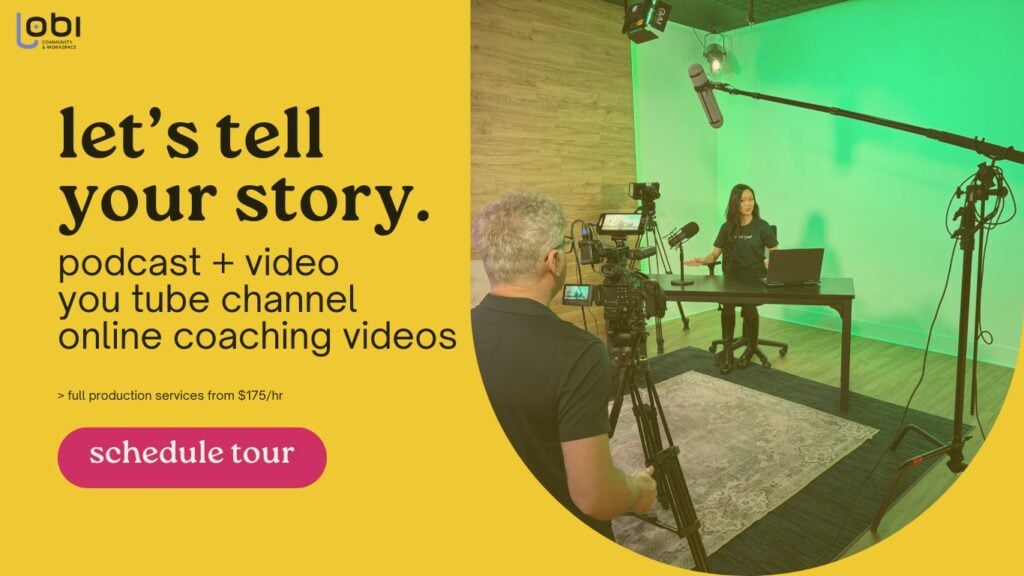
Soundproofing Basics
Ensuring your home podcast studio is fortified against external noise is vital for maintaining high audio quality. Utilize materials such as soundproof foam panels, along with blankets and pillows, to dampen sound reflections effectively. For those on a tight budget, implementing DIY methods like draping moving blankets around the walls can significantly enhance the acoustics of the space. Strategically place these blankets behind and adjacent to your microphone, while stuffing pillows into corners helps minimize echo.
Employing acoustic foam plays a crucial role in absorbing unwanted sounds within your podcast recording studio, thereby boosting overall audio fidelity. To take it up a notch in achieving stellar sound absorption and diffusion within your recording area, consider investing in professional-grade acoustic treatments that offer more precision control over room dynamics – differentiating between managing disruptive noises from outside (soundproofing) versus optimizing internal room resonance (sound treatment).
By integrating fundamental techniques for mitigating interference from undesirable noise sources into your setup process—whether you’re assembling an upscale professional recording studio or arranging a humble nook at home—you elevate not just the ambiance but also assure top-notch sound quality during podcasts recordings. This commitment enhances concentration levels, which translates directly into delivering superior content for listeners.
Essential Podcast Equipment
Outfitting your podcast studio with appropriate equipment is essential to ensure the production of high-caliber episodes. Essential components include a microphone, headphones, a computer, and an audio interface for any well-equipped podcasting space. Even those starting out on their podcast journey can secure excellent sound quality without breaking the bank on premium gear. Of paramount importance is selecting the right microphone since it has a direct influence on your podcast’s audio clarity and fidelity.
Adhering to a thought-out plan from day one sets you up for success in delivering podcasts of superb quality. When choosing between XLR and USB microphones—each type possessing distinct benefits—it’s important to consider what best suits your particular needs as they play critical roles within different setups along with other vital pieces of equipment in the world of podcast production.
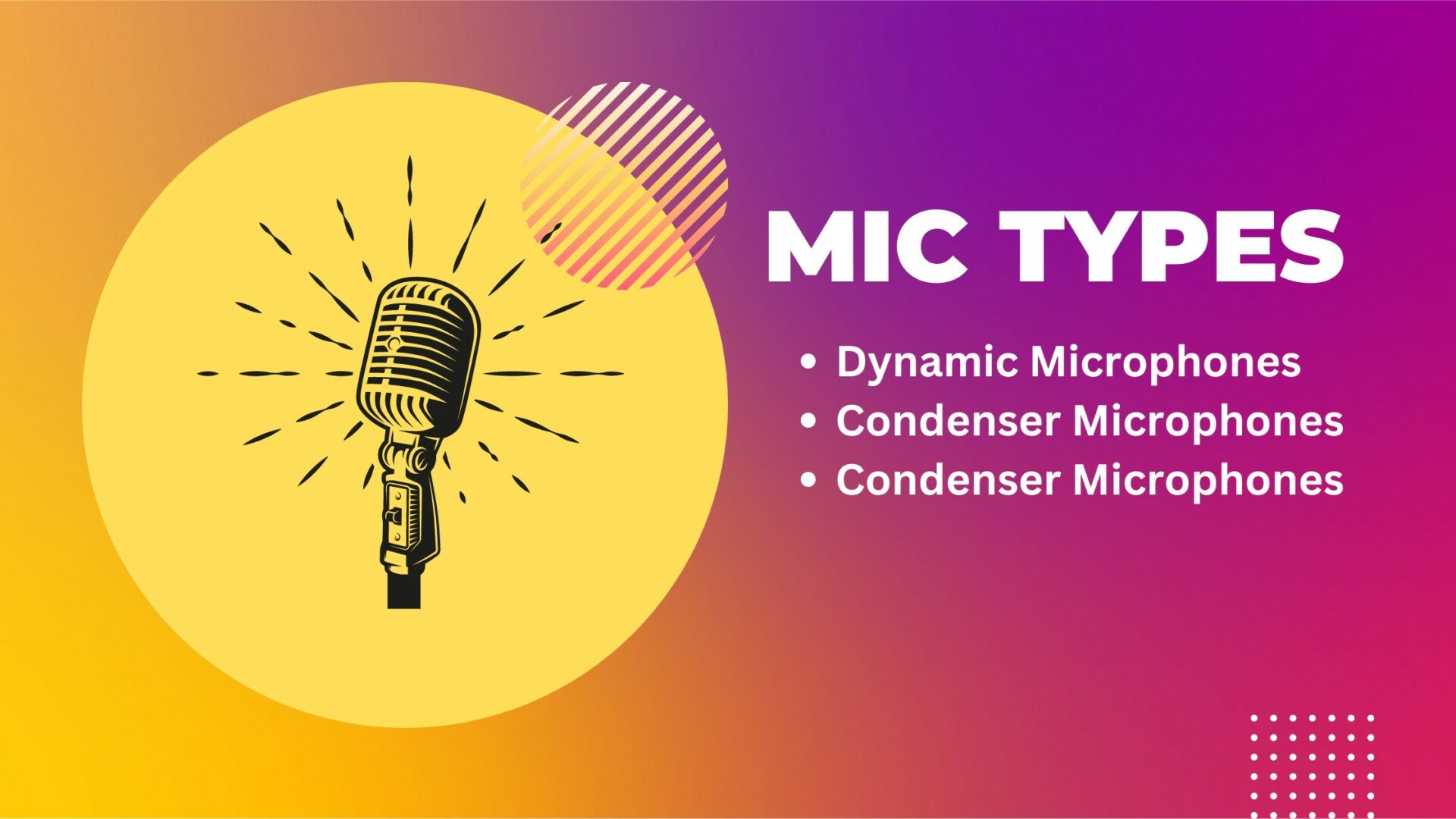
Microphones: USB vs. XLR
Selecting the appropriate microphones is crucial for enhancing your podcast studio setup, as it can considerably elevate the audio quality. For novices, USB microphones offer a straightforward solution since they easily connect to a computer without requiring much additional gear.
Conversely, XLR microphones deliver superior sound quality but necessitate an audio interface or mixer for connectivity to your system. The Shure SM7B has garnered acclaim as the premier choice among podcasters due to its exceptional sound performance. Meanwhile, those looking for affordability might find the Audio Technica 2005USB appealing because it provides both XLR and USB output capabilities.
In more professional environments where capturing crystal-clear audio fidelity is key, condenser mics such as the Electro-Voice RE20 are preferable. By selecting the most suitable microphone for your specific requirements in terms of audio capture and reproduction within your podcast studio environment, you will serve as a fundamental step towards achieving top-tier audio excellence in your podcasts.
Headphones for Monitoring
Ensuring high audio quality during a recording session is imperative, and having reliable headphones is key for this. They help you adjust the levels of volume and tone accurately while minimizing issues like audio feedback and resonance.
When looking for cost-effective choices, consider the Shure SRH440, which comes at an approximate price point of $100 and delivers solid sound isolation. If budget constraints are tighter, one might opt for Behringer HPX2000 headphones though they may not serve vocal recordings optimally due to their pronounced bass response and sharp treble frequencies.
Alternatively, the Sony MDR-7506 offers another commendable option under the $100 bracket renowned for its capacity to contain noise spillage effectively along with a trustworthy reproduction of mid-range sounds.
Audio Interfaces and Mixers
In a podcast studio setup, the inclusion of an audio interface is critical as it facilitates the connection of microphones and mixers with your computer while ensuring that sound quality remains high during podcast recordings. If you’re looking for cost-effective solutions to accommodate two microphones that can also connect to devices such as an iPhone or iPad, brands like Zoom and Focusrite are known for their affordability and dependability.
When hosting multiple people in a podcast recording session—be it co-hosts or guests—a mixer becomes indispensable. It enables better handling of various audio sources and enhances overall control over the sound within your podcast setup. A basic USB mixer suffices for standard needs. Those seeking more sophisticated functionality may consider higher-end models like PreSonus StudioLive 16 channel mixer, which provides greater manipulation capabilities and superior audio quality.

Ensuring your good podcast studio setup features both a trustworthy audio interface along with a competent mixer contributes significantly towards attaining professional-grade sound fidelity comparable to what one might expect from professional studios—it makes no difference whether this configuration is employed at home or within a dedicated recording space.
Setting Up Your Recording Space
Creating your own recording space is equally vital as selecting appropriate equipment. It’s imperative to have ergonomic furniture to avoid discomfort and fatigue during extended recording sessions. The layout of the desk should accommodate your recording gear efficiently, ensuring a smooth workflow.
Positioning the microphone correctly and implementing acoustic treatments are fundamental in producing recordings of superior quality.
Desk and Chair Selection
Maintaining comfort throughout extended recording sessions is essential, and ergonomic furniture plays a pivotal role in this. It’s important to select a desk that facilitates the organization of your podcast equipment, ensuring that items like your computer, audio interface, and microphone are within convenient reach.
When choosing furnishings for your space, prioritize desks with sufficient room to accommodate your setup comfortably and opt for chairs designed to offer robust back support.
Microphone Placement
Ensuring that a microphone is correctly positioned is crucial for capturing audio clearly. Keeping the microphone at an appropriate distance prevents feedback issues and guarantees clear sound. It’s beneficial to experiment with various distances and positions to establish the best setup for maintaining consistent sound levels.
Correctly aligning microphones plays a pivotal role in diminishing background noise, thereby improving the quality of audio capture.
Acoustic Treatments
Improving the sound quality in your recording space is crucial, and one way to achieve this is through acoustic treatments. Various patterns of acoustic foam, such as eggshells, pyramids, and wedges, are available to maximize sound absorption. To elevate audio clarity by minimizing bass reflections within the room, bass absorbers play a critical role. Diffusers serve an important purpose. They disperse sound waves which helps prevent standing waves that could otherwise distort your podcast recordings.
By applying these types of acoustic treatments you can establish a more professional environment for recording. This will lead to cleaner podcast audio that is devoid of unwanted noise interference ensuring listeners have the best possible auditory experience.
Choosing the Right Podcast Editing Software
Ensuring high-quality episodes, the correct podcast editing software, known as a Digital Audio Workstation (DAW), is vital for recording, producing, and editing audio files. This type of editing software improves the final output significantly by polishing the entire podcast recording.
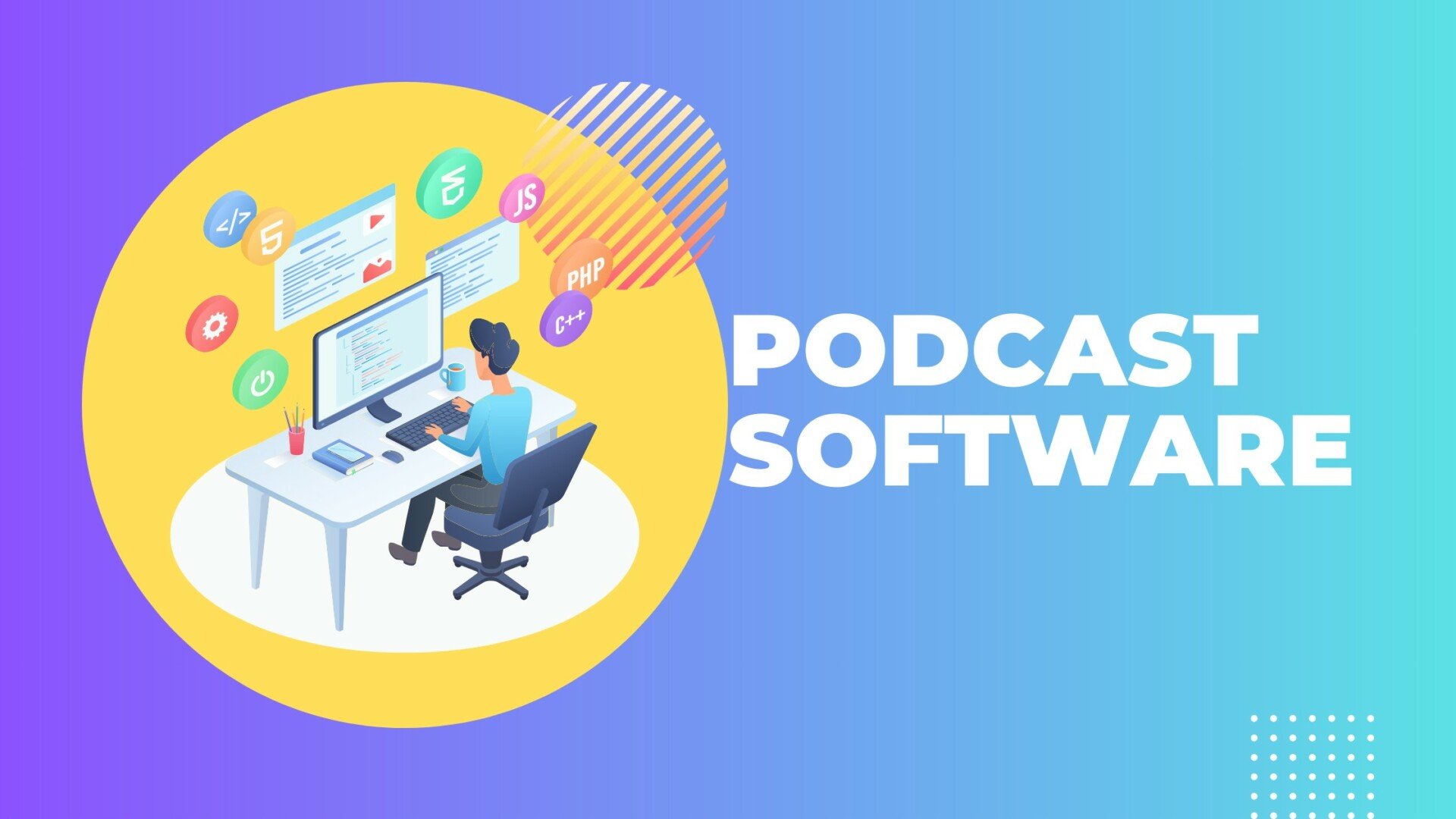
Free Options: Audacity and GarageBand
Free editing software such as Audacity and GarageBand are widely used for podcast production. With features like recording, trimming, equalization, and track fading, Audacity excels in versatility. On the other hand, GarageBand streamlines the process of audio editing with a user-friendly interface that caters especially well to those using Macs.
These no-cost options equip novices with the fundamental tools necessary to produce high-quality podcasts without having to spend money.
Paid Options: Adobe Audition and Logic Pro
Adobe Audition offers a robust set of features for complex audio editing requirements and is especially useful to podcasters, who can access it at an affordable monthly price of $20. Although creating a high-quality podcast doesn’t necessarily require a costly Digital Audio Workstation (DAW), opting for paid software like this can greatly improve your editing potential.
Enhancing Your Podcast with Accessories
Essential accessories such as pop filters, boom arms, and portable recorders can significantly improve the quality of your podcast by adding clarity and maintaining audience engagement in your podcast studio setup.
Pop Filters and Windscreens
Pop filters serve to enhance audio quality by minimizing intrusive noise, ensuring a clearer sound output. These devices are quite affordable and easily accessible.
For instance, the Royer PS-101 is a superior pop filter known for efficiently diffusing explosives without drawing much visual attention.
Boom Arms and Mic Stands
Podcasters benefit from using boom arms and mic stands, which greatly improve the ease of positioning microphones. You can choose between two primary varieties: those that are designed to be placed on a desk and those that come with boom arm attachments. The price for a quality microphone stand is approximately $80, whereas one might expect to pay close to $95 for a weighted desktop microphone stand.
A robust boom arm like the Rode PSA1+ facilitates smooth adjustments of the microphone without introducing any undesired noise into your recordings.
Portable Recorders
Podcasters can greatly benefit from the versatility of portable recorders, enabling them to capture audio in a range of settings. The Zoom H6 is especially adept for mobile use with its integrated microphones and storage capacity, suitable for recording while on the move. It boasts four XLR inputs that support up to six separate tracks simultaneously, perfect for group podcast sessions. Each input comes equipped with individual gain control and Phantom Power options, contributing to superior sound quality.
Remarkably capable of operating continuously for 20 hours on only four AA batteries, the Zoom H6 excels during extended recording periods. Employing such a portable recorder as an auxiliary component enhances your overall podcast studio setup by ensuring you maintain high-quality audio even amid unforeseen circumstances—thus amplifying both the resilience and adaptability of your recording endeavors.
Post-Production Tips for High-Quality Podcasts
In the post-production phase, you elevate your podcast from simple recordings to professional episodes. This pivotal process includes applying noise reduction methods, incorporating music and sound effects, as well as perfecting the final audio files.
Delve into these strategies. To guarantee that your podcast’s audio quality is exceptional.
Noise Reduction Techniques
Choosing the appropriate space for podcasting is crucial to diminish background noise and enhance audio quality. To minimize unwanted sounds and reverberation, it’s essential to locate the most silent room within your home or office. Employ basic soundproofing methods by incorporating easily accessible items such as blankets, cushions, and foam boards that are effective in absorbing sound.
For more sophisticated acoustic optimization, consider implementing specialized treatments like acoustic foam, bass traps, and diffusers. These can significantly improve your recording’s clarity. Strategically setting up your recording environment with these materials can help you achieve a crisp audio output suitable for professional purposes.
Adding Music and Sound Effects
Utilizing music tracks and sound effects can greatly enhance the dynamism and enjoyment of your podcast for listeners. Not only do these audio elements augment production quality, but they also play a significant role in seizing listener attention and maintaining engagement. It is beneficial to delve into an array of music libraries and sources for sound effects to discover tracks that align with the distinct style of your podcast.
Strategically incorporating these audio components can underline important messages while boosting both narrative delivery and emotional resonance within your podcast episodes. It’s essential that they support rather than overshadow the spoken word, ensuring a harmonious balance is achieved within the overall auditory experience.
Finalizing and Exporting Audio Files
Ensuring that your audio files are exported in suitable formats, like MP3, is critical for achieving compatibility with a range of podcast platforms. It’s necessary to standardize the normalization of audio levels so that there’s uniformity in sound throughout the episodes.
It’s also vital to fine-tune bitrate and quality settings tailored to the platforms where your audience will listen. This action is key to preserving high-quality audio and delivering an uninterrupted auditory experience for listeners.
Hosting and Distributing Your Podcast
After preparing your podcast episodes, you must find a means for hosting and sharing them. Utilizing a podcast hosting service allows you to store and disseminate your content while also creating an RSS feed that platforms such as Apple Podcasts and Spotify use to make your podcast available to the audience.
Choosing an appropriate host for your podcast is essential in ensuring that it is easily accessible and widely distributed.
Selecting a Podcast Host
When searching for a podcast hosting service, it’s essential to consider attributes like ample storage space, comprehensive analytics tools, and user-friendliness. A majority of such services alleviate the complexity involved in disseminating your podcast across numerous directories. Transistor.fm stands as an exemplary model of a podcast host providing these indispensable features.
In the process of selecting a suitable podcast host, one must deliberate on factors including sufficient storage capabilities, robust analytic functionalities, straightforward operability, and the potential for growth. Opting for a host that harmoniously works with platforms you are already utilizing—be they websites or social media channels—is beneficial as it can make distributing your podcast significantly more efficient.
Publishing on Major Platforms
Selecting a podcast hosting provider that offers unlimited storage is vital for those who intend to issue several episodes. It’s advantageous to opt for a host that can seamlessly integrate with the platforms you currently use, including your website and social media profiles. The decision of which podcast host to choose plays a pivotal role in determining how accessible and widespread your podcast will be.
To expand your audience reach effectively, it is imperative to disseminate your content across various outlets. Guaranteeing the presence of your podcast on prominent directories such as Apple Podcasts, Spotify, and Google Podcasts is instrumental in enhancing both its visibility and the size of its listener community.
Growing Your Audience with Effective Promotion
To expand your podcast’s listener base, it is essential to implement effective promotion strategies. Utilizing social media platforms, producing video snippets from episodes for online sharing, and engaging in partnerships with guests can greatly enhance audience engagement and elevate the profile of your show amidst a crowded marketplace.
These tactics will be examined more closely to understand their impact on successfully promoting a podcast.
Leveraging Social Media
Utilizing social media platforms, podcasters have the ability to engage directly with their listeners, promote new episodes, and cultivate a sense of community. By interacting via comments and conducting live sessions on these platforms, podcast hosts can strengthen their bond with their audience. The use of platforms such as Instagram and TikTok is instrumental in boosting the prominence of your podcast.
The strategic use of social media serves not only to draw in fresh ears but also retains the attention of current followers. Maintaining regular posts and active engagement are essential tactics for fostering a dedicated community centered around your podcast.
Creating Video Clips
Audiograms or short video excerpts from podcast episodes are effective in increasing engagement and shareability on social media channels such as Instagram and TikTok. These brief video segments can grab the attention of users, leading to enhanced sharing throughout various social media platforms.
Acting as powerful marketing instruments, these clips offer a glimpse of your content that entices new audiences. Distributing these snippets helps capture the interest of prospective listeners and serves to advertise your podcast successfully.
Collaborating with Guests
Welcoming guests to your podcast can not only diversify the material but also extend your audience via their established connections. Providing remote participants with a microphone and technical equipment prior to recording can greatly improve the audio quality of the session. It’s advantageous for hosts to suggest that their guests utilize wired headphones, as this has been known to diminish latency issues and bolster sound precision.
Conducting a preliminary production discussion with invitees sets clear expectations and ensures that their technological arrangements are in order. When podcasters join forces with individuals from pertinent sectors, it creates an opportunity for them to engage new listeners by leveraging these experts’ pre-existing networks.
Summary
Creating a podcast studio involves careful planning and the right equipment choices. From selecting the perfect podcasting space to choosing the right editing software, each step plays a crucial role in achieving high-quality podcast audio. Investing in essential podcast equipment, optimizing your recording space, and enhancing your podcast with accessories can significantly improve your podcasting experience.
Effective post-production, hosting, and promotion strategies are key to growing your audience and ensuring your podcast’s success. By following these guidelines, you’ll be well on your way to creating a professional podcast studio setup that delivers great audio quality and engages listeners. Now is the time to take action and start your podcasting journey.

Frequently Asked Questions
What is the most important piece of equipment for a podcast studio?
The most crucial piece of equipment for your podcast studio is the microphone, as it greatly affects the sound quality and clarity of your recordings. Investing in a good microphone can make all the difference in how your podcast is perceived.
How can I reduce background noise in my podcast recordings?
To effectively reduce background noise in your podcast recordings, choose a quiet room and consider using soundproofing materials like foam panels and blankets.
This will help create a cleaner listening experience for your audience.
What are some affordable options for podcast editing software?
Audacity and GarageBand are fantastic free options for podcast editing that won’t break the bank. They offer all the essential tools you need to get started with your podcasting journey!
Why is it important to use headphones during podcast recording?
It’s crucial to use headphones during podcast recording to monitor audio quality and prevent feedback, which helps ensure your recordings sound clear and professional.
Trust me, it makes a big difference!
How can I promote my podcast and grow my audience?
To effectively promote your podcast and grow your audience, leverage social media, create engaging video clips from your episodes, and collaborate with guests to tap into their networks.
These strategies will help boost your visibility and attract more listeners.
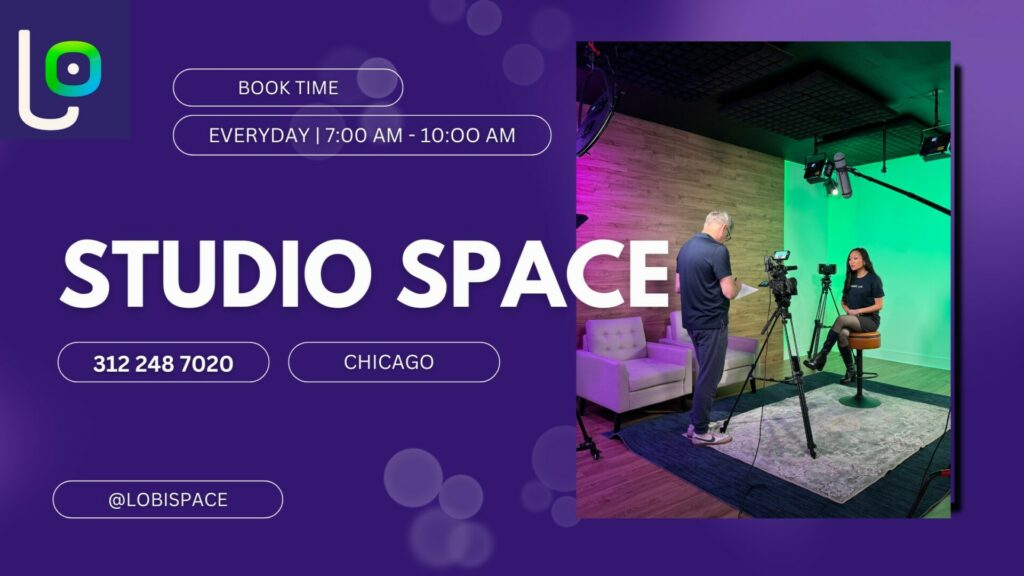
readers also enjoyed…
keep the momentum going.
explore more blogs and industry news
